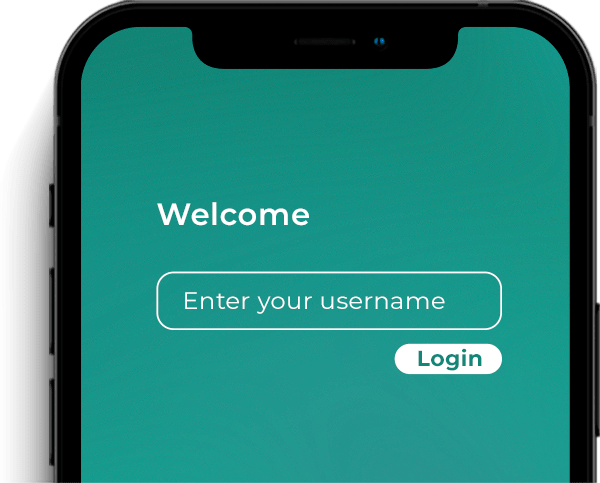Why being Frictionless Is Important for Mobile App Development
Friction in app development refers to any design or technical choice that makes it harder for the end-user to complete the task they’re trying to achieve. So, in short, “frictionless” is what users want from their experience - a streamlined and efficient system that does its job at speed.
Frictionless business. Frictionless usability. Frictionless payments. Frictionless authentication.
Frictionless applies to anything, and it should be applied to anything.
If you’re an analyst, you work in fintech, or you’re building (or have built) a mobile e-commerce app, you’ll know this all too well. Creating a frictionless process should be the backbone of your mobile app development methodology.
Frictionless Definition: What Exactly Is “Frictionless”?
Accordingly to the Pacific Telecommunications Council, a frictionless business definition is:
“The sum total of all actions any business can take to create and keep customers, increase the volume of products sold to those customers with acceptable profit margins, and maintain or grow market share with superior return on investment.”
An example of a frictionless business would be a business that offers a smooth customer experience. For instance, a business could provide:
- Ticketing systems or help desks to avoid long customer response times
- Have an organized service team
- Implement a streamlined and responsive online experience by ensuring apps and websites run quickly and work correctly.
These are just a few out of many potential examples.
The Importance of a Frictionless Mobile App
According to Oberlo, in 2021, the number of online shoppers has risen to 2.4 billion. To put that into perspective, that’s roughly 27% of the world’s population. 27% of the world’s population are now not experiencing face-to-face customer service, or they’re experiencing it at a significantly lower rate. However, the ‘in-person’ standards we hold for these services (such as a polite demeanor, efficient service, empathetic character, and adequate complaints system) haven’t gone with it. Instead, they’re just adjusting to the online world. This means businesses need to implement these things in virtual settings (and incorporate new systems) to ensure frictionless operations.
This starts from the ground up with mobile app development. When you’re developing an app, you’ll need to switch your focus to things like:
- Optimizing the user experience for speed
- Reducing the number of form fields
- Requesting user permissions at the moment in the user journey where the user value is clear
- Using the technologies on the smartphone to deliver value-added services
- Ensuring security for the user but not making it too onerous
Customers value simplicity and speed, so reducing the amount of information they need to input is critical to avoid “abandon at checkout” situations.
Apps and Friction - All There Is To Need to Know
To capture mobile shoppers, you’ll need a seamless, end-to-end experience.
78% of users would rather shop on an app than a mobile site. Statistics from Social Media Today have revealed why. Let’s take a look:
- 63% say it’s more convenient
- 57% say it’s faster
- 40% say their settings are stored
- 31% say there are benefits and rewards to using an app
- 21% say the content is more personalized
- 20% say they can find better deals
- 14% can do more of the things they want
- And 5% find it more entertaining
There are several types of friction that mobile users encounter. The most common are:
Authentication Friction:
One-time Passwords, authentication apps and many more authentication methods take users out of their way to prove their identity. The objective is to secure users and their accounts, but the notion of the more friction, the higher security is outdated.
Discovery Friction:
This can be caused by poorly targeted ads, sub-par landing pages, and information gaps.
Purchase Friction:
This happens when buyers lack information about shipping times, product availability, or when the checkout process is too long.
Post-Purchase Friction:
This can be caused by slow delivery times, inadequate order tracking processes, complex returns processes, a lack of loyalty programs, and more.
How to Avoid Friction in App Development
The app development process is the best place to implement frictionless design and ensure a good user experience from launch. Knowledge is power when it comes to avoiding common mistakes. By analyzing how the leading mobile apps in the industry design their user experience, developers can easily match the best standard. However, general rules to avoid friction will usually involve:
Eliminating screens and form fields: The fewer fields users have to fill out, the less they will be slowed down or obstructed. This is especially vital for mobile development, as the smaller screens make it more challenging to fill out forms comfortably. Best practices like breaking forms up into smaller sections and illustrating how many steps are left can make the process less inconvenient. Also, it is important to consider standard methods like automatic form-filling or passwordless authentication. Invest in user testing regularly: User Feedback will help determine if there are areas of high friction in the mobile app design to be improved.
Mobile apps already provide data that could be analyzed for essential insights on friction, such as:
- Where users are dropping off
- What users are doing with the app (compared to what would be expected by the design and product teams)
- Meaningful differences between user segments
- Common errors and pain points
- App store reviews and feedback to the customer success team
Flatten the learning curve: Users already use hundreds of apps. This is only possible because universal gestures like taps and swipes achieve similar results across the board. To avoid friction, don’t try to reinvent the wheel.
Frictionless Authentication Solutions
Whether in banks and fintech, retail and mobile commerce, or food delivery, seamless customer delivery is vital for businesses and users.
For more information about frictionless authentication solutions, read about Zero-Factor Authentication, a solution enabling mobile app developers worldwide to spare users from friction by authenticating them with no action whatsoever.
